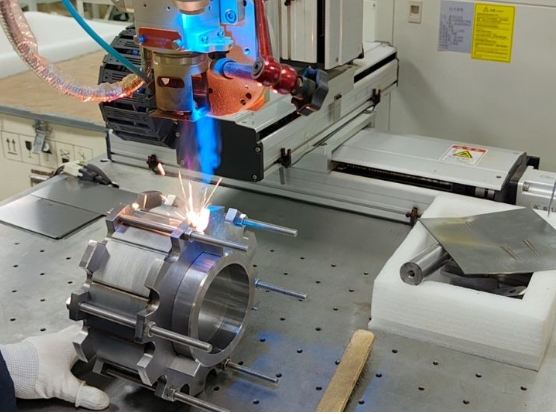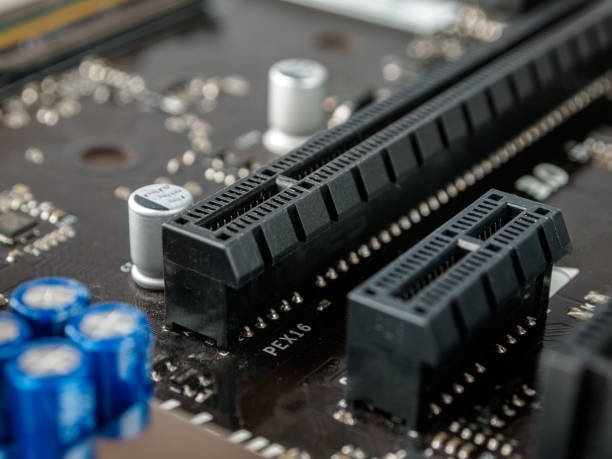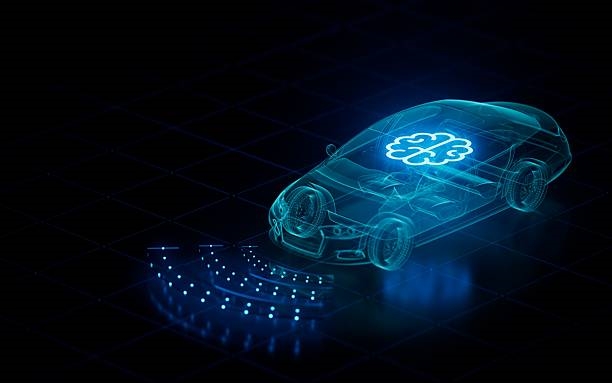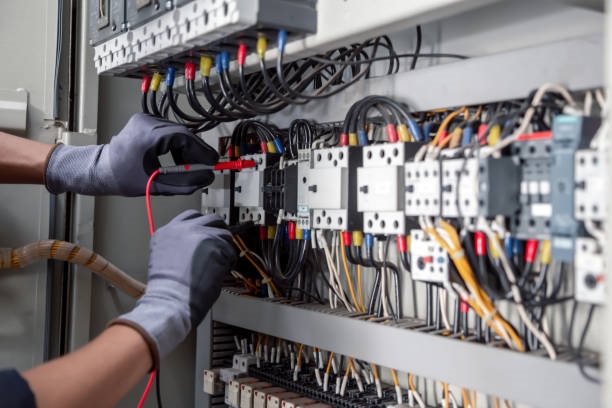Introduction
If you have ever inspected the messy wiring harnesses in a car, you know these bundles can be enormous. Hundreds of wires are tied together with cable ties, and cutting into them risks damaging internal shielding.
These bundles take up valuable chassis space, add unnecessary weight, and create more potential failure points. New high-bandwidth wiring developed around enterprise networking standards can replace those bundles with a single slim cable and deliver more total bandwidth than all the old cables combined.
This is part of the promise of automotive Ethernet, but its benefits go beyond just bandwidth.
Why bandwidth matters
The era of software-defined vehicles (SDV) is approaching. With more software running more vehicle subsystems, the ways a car behaves can change fundamentally, and driving functionality can even be modified via code downloaded from the cloud.
More software in the vehicle means more data. High-resolution sensors that help modern vehicles perceive their surroundings generate large amounts of information every second. These data must be transmitted across the vehicle as continuous streams that quickly accumulate into large volumes.
Modern infotainment systems can support many channels simultaneously. Dolby Atmos audio or high-definition video may be streamed to multiple rear-seat displays.
In short, a lot is happening beneath your next car's exterior, and all of it requires more bandwidth. Ethernet is the solution.
What Ethernet means in this context
Many readers know Ethernet as the cable that connects an ISP modem to a wireless router, commonly Cat 6. Gamers use it to connect a PC or console for lower latency. That familiar household cable contains multiple twisted pairs and usually terminates with an RJ45 connector. Named standards such as 100BASE-T and 1000BASE-T indicate 100 Mbps or 1,000 Mbps (1 Gbps) respectively.
For modern automotive data, those speeds can be insufficient. Faster rates require different cabling and connectors optimized for vehicle use: thinner, lighter, and cheaper than the tangled cables behind a desk, while providing the bandwidth SDV applications need. Some deployments use a new connector standard and even optical fiber in the vehicle backbone.
Marvell's Amir Bar-Niv noted that the industry is working with technologies from 100 Mbps, gigabit, multi-gig, and up to 25 G, all designed to meet T1 requirements for automotive applications. At 25 G, the same 4K movie could be transmitted in about eight seconds, providing headroom for demanding applications.
History and functional elements
Automotive Ethernet is not entirely new. TechInsights automotive vice president Ian Richards notes that BMW first introduced Ethernet in the F01 7 Series around 2008, initially for a diagnostic port and for infotainment links at about 20 Mbps. Early automotive applications used familiar 100BASE-T cabling similar to home networks.
Beyond cabling, a vehicle network needs endpoints that generate and consume data and the switching infrastructure that routes traffic. Placing switches optimally within the vehicle reduces the amount of wiring needed while keeping devices able to communicate. This network architecture or topology is where design choices become important.
From domain architecture to zonal architecture
Traditionally, wiring harnesses grew as vehicles added features and options. The legacy approach, often called domain architecture, treats each system—lighting, infotainment, and so on—as a separate domain. Each domain is controlled by multiple electronic control units (ECUs) scattered around the vehicle. Adding a new feature frequently meant adding more wires to the harness.
Bar-Niv described this as the legacy of how systems were connected: in vehicles where domains share little, each domain required cabling that ran throughout the car, resulting in a large volume of cables, high cost, and a wiring "highway."
Automotive Ethernet enables a zonal or regional architecture. Each zone contains sensors and actuators and is served by a local Ethernet switch. Traffic from that zone is aggregated onto a thin Ethernet cable that forms the vehicle backbone. Multiple vehicle systems then communicate over the same network, simplifying vehicle design. A smaller number of more powerful central processors can handle the vehicle's compute needs instead of many dispersed discrete controllers.
Functional flexibility
Consolidating sensors onto a shared Ethernet network enables software to use data in new ways. Bar-Niv explained that cameras today often use point-to-point links, making a rearview camera available only to the rearview function. If cameras are on a common Ethernet network, software can repurpose them—for example, streaming a rearview camera feed over the internet as a dashcam feature—which can be delivered via over-the-air updates.
That flexibility is central to SDV adoption. Recent surveys of vehicle manufacturers indicated a trend toward this architecture for the majority of new vehicles by the mid-2020s, suggesting significant industry momentum beyond luxury segments.
Performance expectations
Bandwidth requirements are rising. According to Bar-Niv, 100 Mbps is inadequate for modern domain-level infrastructure, and devices below 2.5 Gbps are increasingly unacceptable. Many core technologies are based on common enterprise networking hardware, but automotive applications demand higher reliability and different operational constraints.
Reliability and safety considerations
Automotive components must meet stringent quality targets. One metric is DPPM, defects per million parts. Consumer networking equipment may have DPPM in the hundreds to thousands, whereas automotive targets aim for fewer than 1 DPPM.
Even with higher-quality parts, failures can occur. Redundancy is used to mitigate risks, such as network switches with dual-core lockstep processors where computations are performed twice and compared. Discrepancies trigger algorithms that preserve system functionality based on the trusted processor output.
Security
Consolidating multiple vehicle functions on a single network increases the attack surface. In legacy architectures, domains were often isolated, making lateral movement more difficult for an attacker. With a unified Ethernet network, a compromised component could offer a path to broader system access.
Hardware security modules (HSMs) mitigate some risks by generating cryptographic keys and signing or encrypting in-vehicle data. HSMs provide an enterprise-grade security approach adapted to automotive requirements.
Cost considerations
Running an Ethernet-based architecture in a vehicle involves costs for wiring, switches, HSMs, and the associated software. TechInsights' Richards observed that automotive Ethernet is more expensive than slower legacy CAN links, but it is a fundamental building block for on-demand features and high-speed communication required by advanced driving functions.
Richards suggested that Ethernet is effectively the only option for high-data applications. Compared with the cost of some sensors, such as vehicle-mounted LiDAR, the network hardware cost is small. Moreover, shifting from domain to zonal architecture and removing redundant components can yield long-term savings. Some suppliers estimate a potential 10% reduction in vehicle networking cost and a reduction in required onboard components, which could ease supply constraints that affect the industry.
Adopting automotive Ethernet can make vehicles smarter, lighter, and less costly to produce, and it may ease component availability in the future.
 ALLPCB
ALLPCB







